With the birth of ChatGPT in 2023, it directly opened the first year of artificial intelligence on a global scale. Suddenly, artificial intelligence, AI, and generative large models have become hot words in the entire market. This has also led to the fact that in the past two years, not just Internet companies, as long as any technology industry launches a new product without using the gimmick of AI, it seems that it cannot keep up with the trend of the times.
But in the past two years, when we continue to discuss whether AI will replace humans, for most ordinary people, the impact of artificial intelligence seems to still be on the interaction with large language models like GPT. At the consumer level, how AI is perceived and how it is actually integrated into and affects daily life is still a vague concept for many people.
Recently, the 5th Shenzhen International Artificial Intelligence Exhibition was held at the Shenzhen Convention and Exhibition Center. As one of the three major artificial intelligence industry cluster cities in China, Shenzhen's artificial intelligence industry development has firmly ranked first in the country, with more than 2,200 artificial intelligence companies, and the industry scale has exceeded the 300 billion yuan mark.
Driven by technological innovation, technological innovation and data-driven development, new productivity has become the core force driving the development of the artificial intelligence industry. Taking Shenzhen as a microcosm and the International Artificial Intelligence Exhibition as a window, we may be able to get a glimpse of——
From promoting the development of autonomous driving technology, to improving the level of intelligence in industrial manufacturing, to optimizing the accuracy of medical services, and making home life more convenient and comfortable...artificial intelligence is empowering traditional industries in innovative ways. Improve efficiency and create new business models and service models.
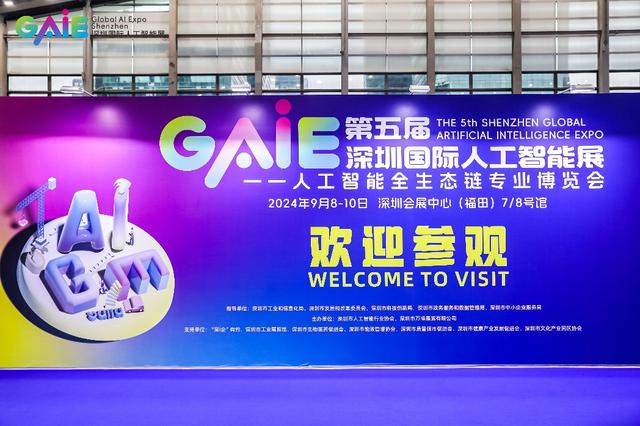
There is no better way to attract attention than to place a few moving robots in front of your booth.
How popular is embodied intelligence? If large models ushered in the first year of artificial intelligence, then embodied intelligence is the next wave of artificial intelligence development.
The so-called "embodied intelligence" is to add a "body" to the AI "brain". It emphasizes that intelligent systems need to have a physical form and gain intelligence through real-time interaction with the physical environment.
In the early days, "bodies" were generally in the form of robotic arms, machine tools, etc. With the development of industry, how to enable robots or other intelligent agents to have human-like perception, planning, decision-making and behavioral capabilities has begun to become the research target of embodied intelligence.
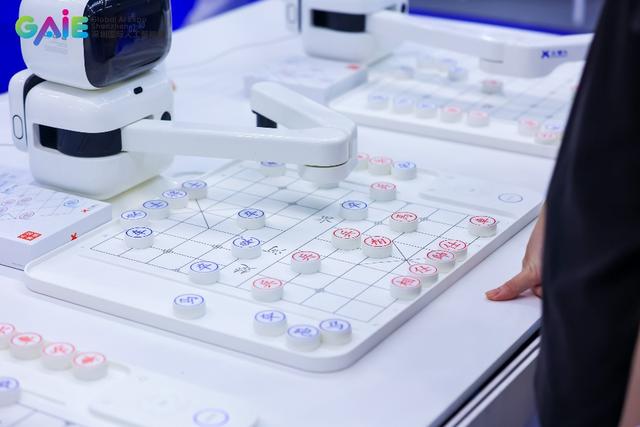
The ideal form of this goal at this stage is to be "like a human being". In the past two years, driven by the rapid development of large models, the humanoid robot industry has ushered in the spotlight and become one of the hottest tracks in the global technology industry.
At the International Artificial Intelligence Exhibition, the presence of embodied intelligence is also very noticeable. Throughout the entire exhibition hall, booths such as humanoid robots, AI chess-playing robots, and service robots are often the areas where the largest number of visitors gather.
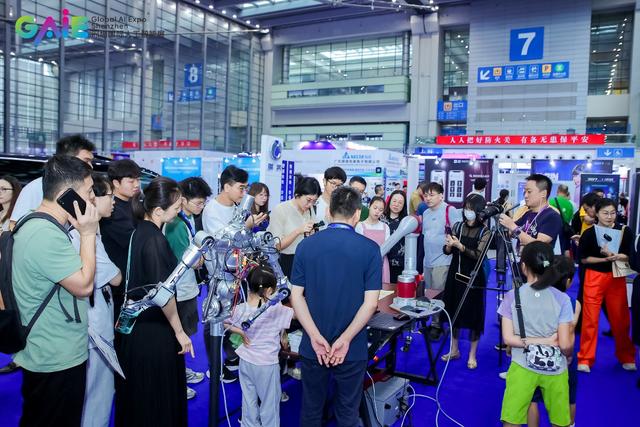
Take Zhongqing Robot, which has just completed nearly 100 million yuan in financing, as an example. Its first bipedal robot product, SA01, can achieve multiple functions such as stable walking, obstacle avoidance navigation, and voice interaction through motion control algorithms and sensor technology.
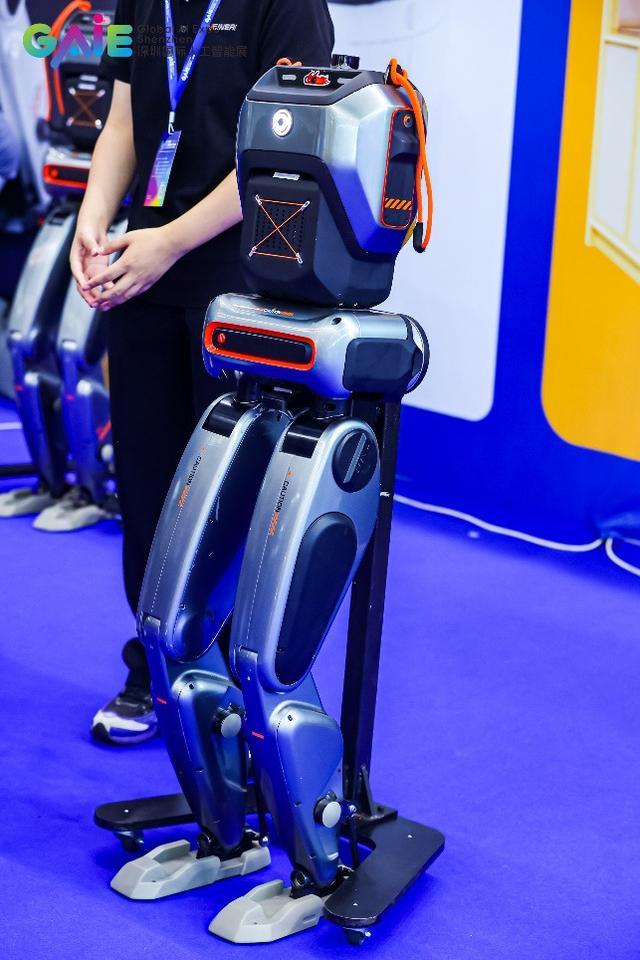
In the research of embodied intelligence, the application of large model technology is becoming more and more important. With the rapid development of large models in the past two years, most generative large models already have rich knowledge and strong generalization capabilities. These large models can often provide embodied agents with capabilities such as environmental perception, natural language understanding, and task planning, greatly improving the intelligence level of the agent.
Although most humanoid robots, including Zhongqing Robot, are currently targeted at the scientific research and education market, it is foreseeable that as humanoid robots continue to mature and become more popular, by combining large-model technology, humanoid robots are expected to be used in home services and medical assistance. It has been applied in many fields such as education and entertainment.
From being more of a trendy and cool new thing in the early days, to gradually evolving into more universal underlying capabilities, in the future, with the advancement of standard system construction, industrial chain synchronization, innovation achievement transformation, ethical governance, etc., humanoid robots will It is expected to become a "new engine" for the development of new quality productivity.
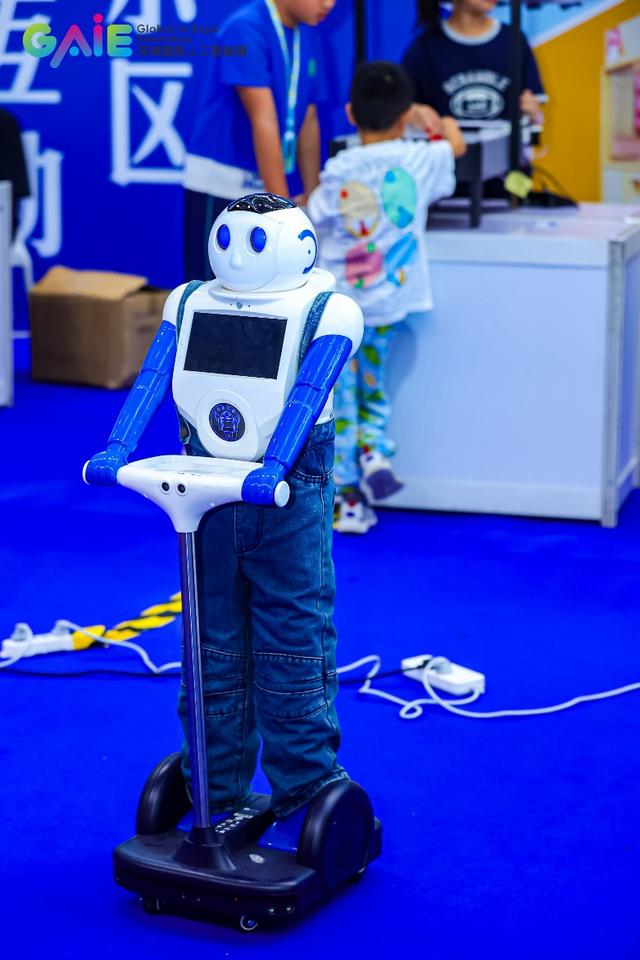
Nothing can better represent the development direction of the artificial intelligence industry in the new cycle than "new quality productivity".
At the conference, Zhang Long, Director of Baidu Intelligent Cloud Ecological Cooperation, joked. "Based on the big model, only two types of people will make money in 2023, one is those who sell cards, and the other is those who sell courses."
"What they sell is not knowledge, but anxiety. Because knowledge has really changed and iterated, everyone will have anxiety."
In the past two years, many people have heard this sentence: Artificial intelligence will not eliminate people, it will only eliminate people who do not understand artificial intelligence.
What we have to admit is that as artificial intelligence plays an increasingly important role in all walks of life, in the future, the so-called digital and intelligent transformation will be based on artificial intelligence, large model training ideas or research ideas.
As Gao Wanqi, an artificial intelligence researcher at the South China Branch of the China Electronics Technology Standardization Institute, said, as artificial intelligence gradually changes from a dedicated one-way task assistant to a functional task assistant, the obvious trend that can be seen is that currently various large models and industry models They are constantly moving towards real application scenarios, such as industry scenarios, daily office scenarios and user customization scenarios. In the process of technology moving towards application scenarios, many new technical points and many innovative solutions will also be derived.
All in all, the development trend of the entire industry can be summarized by one core concept, that is, "new quality productivity".
What exactly is new productivity? From a macro perspective, it can be simply understood as a new form of productivity. If it is placed in the context of the intelligent era, its essential feature is that technological innovation occupies a dominant position in its generation and development, and the traditional form of productivity is the driving force. There is a sharp contrast between the source and actual results, but the core connotation of "productivity" is ultimately settled.
Including the embodied intelligence mentioned above, as well as the autonomous driving technology that has become popular in the past two years, they are actually typical representatives of new productivity empowering traditional industries.
From the perspective of practical application technology, whether it is embodied intelligence or autonomous driving, the prerequisite for realizing interaction with the environment is that they need a pair of keen eyes that can actively perceive three-dimensional space and integrate multiple sensory modalities, so as to operate in complex environments. environment for effective interaction and task execution.
Machine vision is this bridge and the basis for them to achieve intelligence and automation.
Chen Yan, vice president of Han's Laser, also said that from a global perspective, although the sales of machine vision are only at the level of 100 billion, its role in practical application scenarios cannot be underestimated. Machine vision is the "eyes" of intelligent manufacturing.
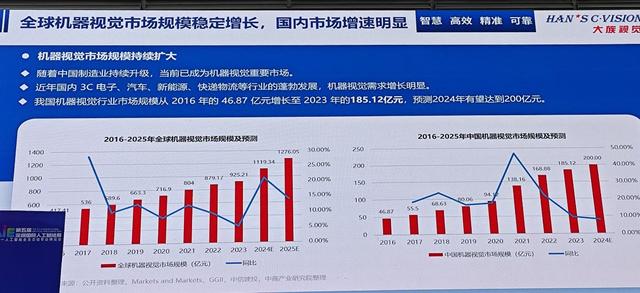
Taking autonomous driving as an example, Tesla is an autonomous driving technology based on pure visual navigation. It captures image data of the surrounding environment through on-board cameras, and then processes and analyzes it through neural networks to achieve autonomous navigation of the vehicle. In contrast, autonomous driving such as "Carrot Run" uses map navigation combined with machine vision technology.
Chen Yan believes that if vision is used as a representative, AI can be reflected in time, and map navigation is highly dependent. When driverless driving is not purely visual navigation, errors will occur. If there is a slight obstruction, the car will stop and drive very slowly, making it impossible to make quick judgments.
It is worth noting that although China's machine vision technology is quickly catching up with global levels, especially in the field of 2D vision. However, in terms of 3D vision technology, especially 3D camera technology, China still relies on imports for a large proportion. This also means that in the field of high-end machine vision technology, China still needs to strengthen its independent research and development and innovation capabilities.
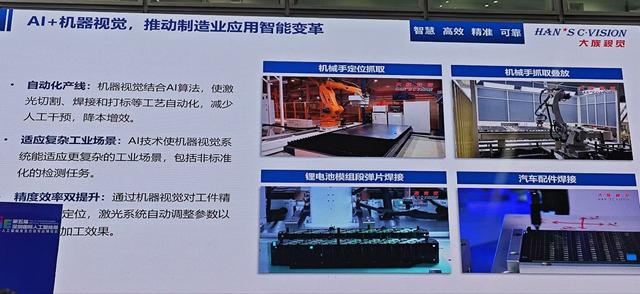
If autonomous driving technology is an important manifestation of new productivity, then smart city construction is a comprehensive carrier for the development of new productivity.
Vehicle-road collaboration is an important concept in smart cities. It facilitates autonomous driving through information interaction between vehicles and vehicles and between vehicles and roads. This synergy not only improves the safety and efficiency of autonomous driving, but also provides new ideas for traffic management in smart cities.
For example, Beijing, Shanghai, Guangzhou and other cities, as pilot cities for the coordinated development of smart city infrastructure and intelligent connected vehicles, have made significant progress in the field of intelligent connected vehicles.
The construction of smart cities is inseparable from the support of innovative new technologies. Technologies such as positioning measurement and laser scanning play a key role in Hexagon's geographic information systems and smart space products.
These technologies are combined with core industrial software to form customized solutions for specific needs. Furthermore, these solutions have converged into a diverse platform, serving multiple fields such as smart construction, project management, and geospatial information data analysis.
A series of platforms provided by Hexagon, such as command and measurement platforms, command and construction platforms, etc., are built based on these technologies. They provide strong support for all aspects of smart cities such as rail transportation, energy management, mine monitoring, smart education, underground space information management, and dam monitoring.
The construction of smart cities is a complex and comprehensive process, especially the empowerment of various industries by artificial intelligence. As an important engine for promoting the development of new productivity, artificial intelligence is changing the world at an unprecedented speed.
The Shenzhen International Artificial Intelligence Exhibition is not only a feast of technology, but also a benchmark for future development. The wave of artificial intelligence has become unstoppable, and progress in every field tells the infinite possibilities of artificial intelligence. In this process, we will face challenges and gain opportunities.
As Zhang Xinhong, former chief information engineer of the National Information Center, director of the "Information Society 50 Forum" and executive member and secretary-general of the "China Informatization Committee of 100", said, human beings' anxiety about this new technology is not caused by AI. It has always been there. What we are currently experiencing is the AI stage, where cognitive abilities have begun to develop, but they are not as good as humans. But if we reach the second and third stages, when we reach digital immortality, when everyone has their own digital person or robot, it won’t matter whether you are there or not, it will survive on your behalf. "What is supposed to come will come, and we still need to be prepared."